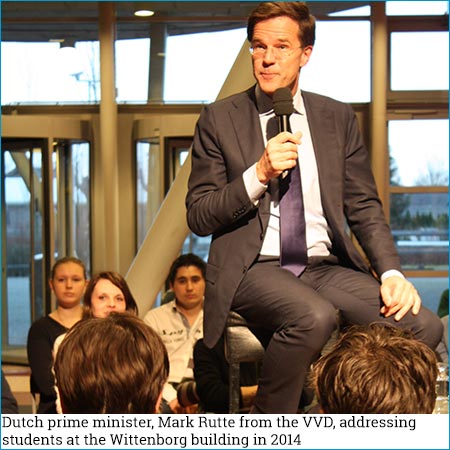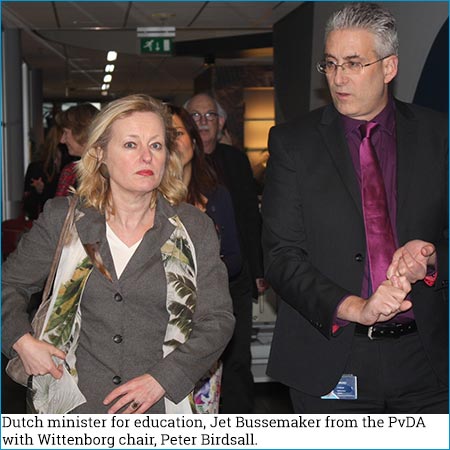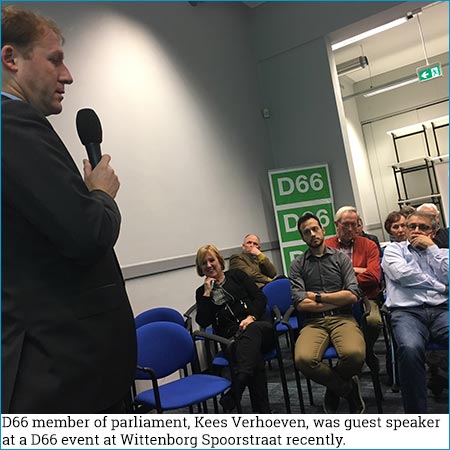Dutch Election 2017: Everything you Need to Know
 Foreign students cannot vote in the coming Dutch Election on 15 March 2017, but that does not mean they should not care. The outcome of the election might have an effect on government policy affecting international students.
Foreign students cannot vote in the coming Dutch Election on 15 March 2017, but that does not mean they should not care. The outcome of the election might have an effect on government policy affecting international students.
Also, let’s not forget this election is probably the most exciting one the Netherlands has had in years! So, pass the popcorn.
The Dutch Election System in a Nutshell
Since 1918, no party in Holland has ever won enough seats to gain an outright majority. As such, governments are usually formed by coalitions of two or more political parties. The current Dutch government is ruled by a coalition of the VVD and the PvDA.
 The Dutch have a list proportional system. That means the electorate vote for parties - not individuals like in the recent US presidential election. The number of seats a party gets in parliament is in proportion to the votes cast for it. The party determines who will represent them in parliament by way of a pre-determined candidate list.
The Dutch have a list proportional system. That means the electorate vote for parties - not individuals like in the recent US presidential election. The number of seats a party gets in parliament is in proportion to the votes cast for it. The party determines who will represent them in parliament by way of a pre-determined candidate list.
The Front Runners
Far-right politician Geert Wilders from the PVV has been dominating polls, riding a wave of far-right sentiments in Europe. He is up against centre-right prime minister, Mark Rutte, who is leader of the VVD party.
Nicknamed the “Dutch Donald Trump”, Wilders is known for his anti-immigration views and isolationist manifesto, including calls for the Netherlands to leave the EU. Even though Wilders is a serious contender to win the popular vote, his party will battle to find coalition partners among the mainstream parties. Rutte has reiterated in the press that the VVD will not form a coalition with the PVV.
The Election in Numbers
- 28 – the number of political parties that will compete in the election
- 150 – the number of seats up for grabs in the House of Representatives (Tweede Kamer)
- 17 million – Dutch population
- 12,9 million – the number of people eligible to vote
The Main Parties
Party | Leader | Current Seats | Values |
VVD | Mark Rutte | 40 | A centre-right conservative liberal party with an emphasis on private enterprise, the free market, democracy and international cooperation. |
PvDA | Lodewijk Asscher | 35 | Social democratic centre-left party, which combines socialist ideas with liberal and humanist ideas. |
SP | Emile Roemer | 15 | The SP’s vision of society is based on the values of human dignity, equality and solidarity. |
CDA | Sybrand van Haersma Buma | 13 | Despite the name, it has Christian and non-Christian supporters. Centre-right party with some centre-left leanings. |
PVV | Geert Wilders | 12 | Right-wing party combining economic liberalism with anti-immigration policies. |
D66 | Alexander Pechtold | 12 | Progressive and social-liberal party. Guiding principles are power and freedom of the individual, international cooperation, sustainability and civil rights for all. |
 Who can Vote?
Who can Vote?Every Dutch citizen aged 18 years and older is eligible to vote in the Dutch general election, the European Parliament, as well as the provincial and municipal elections.